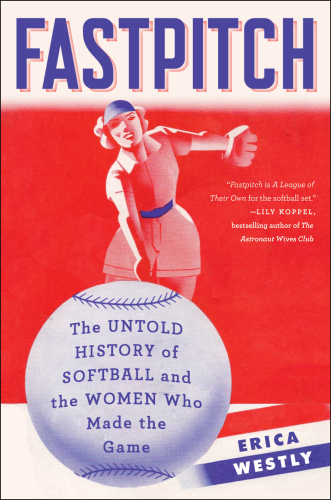
Fastpitch
The Untold History of Softball and the Women Who Made the Game
کتاب های مرتبط
- اطلاعات
- نقد و بررسی
- دیدگاه کاربران
نقد و بررسی

April 11, 2016
This well-researched book on softball history underscores the fact that present-day women’s sports face all the same
hurdles they did a century ago. Though softball was invented in 1887, the fastpitch version only became a spectator sport in 1933 at the Chicago World Fair. In the 1930s, softball was one of the few sports women were allowed to play. The sport mainly grew via amateur leagues where companies sponsored teams. Though games were well-attended, teams were not profitable because tickets were cheap; the teams with the richest sponsors won most of the championships because their players could live on their softball salaries and focus on sports. The late 1960s saw the first push to get softball into the Olympics after Australia hosted a five-country international tournament. Still, women in sports continued to be treated as a novelty. Title IX became law in 1972 and created new opportunities in college sports for female athletes and coaches. An unexpected result was the fall of the adult leagues; as Westly explains, by the early 1980s, “fastpitch was now primarily a college sport.” At present, “to actually make a living playing softball, most players have to go overseas.” This, along with other ongoing battles for equity, shows the importance of Westly’s historical account.

June 1, 2016
Since its invention in 1887 as an indoor version of baseball, softball has played a unique and defining role in American culture and history, as it was one of the first sports to take women's teams seriously. This is what journalist Westly aims to illustrate in this debut as she traces the rise of women's softball during the 1900s. Most interestingly, she documents the emergence of women leaving home in the 1940s; not for marriage, but to join top softball teams across the United States. Female players endured sexist media coverage and ridiculous rules ranging from how to conduct their personal life to what makeup and clothes they were allowed to wear off the field. The author details the compelling development of the sport, including company-sponsored teams and changing politics, while centering on the personal and professional lives of honored players such as National Softball Hall of Famer Bertha Ragan Tickey. VERDICT A fast-paced journey through an original American sport, this well-documented history will give all readers a sense of nostalgia.--Heidi Uphoff, Sandia National Laboratories, NM
Copyright 2016 Library Journal, LLC Used with permission.

June 1, 2016
It's probably asking too much that this history of women's fast-pitch softball be utterly compellingunfortunately, the untangling of competing associations alone takes some of the steam out of the narrativebut it does fill a yawning gap in the literature. It's especially strong at conveying how popular, at times, the game has been as a spectator sport; for example, the 1938 Southern California championship game drew more than 20,000 spectators. And the author draws fine profiles of some of the sport's legendary figures, like pitcher Bertha Ragan (162 no-hitters, 11 national titles); its great teams, like the Orange (California) Lionettes and the Stratford (Connecticut) Brakettes, a team that thrives today; and, especially, a cultural climate that has often been unsupportive of, if not antagonistic toward, those gifted, dedicated athletes who work to get better. Westly doesn't really address the college game, which is treated elsewhere, but does track the sport's presence, and now absence, at the Summer Olympics.(Reprinted with permission of Booklist, copyright 2016, American Library Association.)

























دیدگاه کاربران